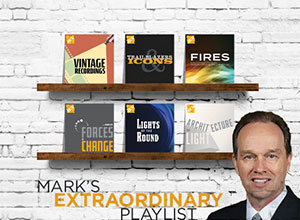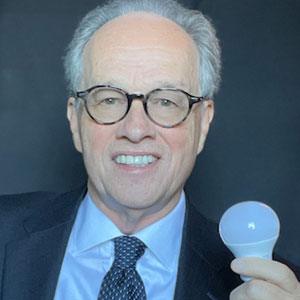Artists vs. craftsmen and how they make ‘music’ together
By Mark Lien
 Amazon Prime music feeds my musical gluttony. New releases come out on Friday and I download hours of new music every week. Recently a Keith Urban song was released and after listening to it, followed by new ones by SZA and Lady Gaga, it struck me that they were not artistic.* These songs seemed like formulas created by mixing successful elements of music like acapella breaks, hand claps, etc., with lyrical themes crafted to resonate with their demographics. For Keith that could be trucks, beer or in this case God whispering to him. Musical genres have some distinction but within each genre the songs sound similar because of using formulas. These are listenable songs that feed the music business machine and they are very well produced. They are made by great craftsmen.
Amazon Prime music feeds my musical gluttony. New releases come out on Friday and I download hours of new music every week. Recently a Keith Urban song was released and after listening to it, followed by new ones by SZA and Lady Gaga, it struck me that they were not artistic.* These songs seemed like formulas created by mixing successful elements of music like acapella breaks, hand claps, etc., with lyrical themes crafted to resonate with their demographics. For Keith that could be trucks, beer or in this case God whispering to him. Musical genres have some distinction but within each genre the songs sound similar because of using formulas. These are listenable songs that feed the music business machine and they are very well produced. They are made by great craftsmen.
The reason that street fairs promote “arts & crafts” is that the two can be distinctly different. When an artist works with great craftsmen it enhances their art. The songwriter can be a craftsman, the singer as well, along with the musicians and the producer. When they are all great craftsmen, the absence of a unique artist’s touch or vision is conspicuous. Most craftsmen earn their living by making things that are desired by others. Following a process, a furniture maker could make several minor variations on a dresser for example. He could cut the wood, build them and then the variation would come from different hardware or finishes. Similarly, a musician can follow a process toward what is popular and make things almost the same but with a different polish. My comments here are comparing commodity music to the great art that music can be. Lighting can be a commodity in terms of both designs and products. It also has the potential to be an art.
In lighting we don’t say “arts & crafts,” we say “art & science” of lighting. That is not to infer the absence of craftsmen in the lighting industry, just that science is a more significant part of what we do. There is a unique artistic vision from some lighting designers that can evoke feelings in spaces they design. There is an aspect of science that supports the foundations, the common threads of belief that inform our lighting community. Very impressive lighting scientists work at our national labs addressing gaps in our knowledge. Science informs our industry. Some lighting designers are artists (apply Pareto’s law to quantify) with light as their medium.
That leaves us to address the craftsmen. Many lighting designs follow formulas or rules of thumb for their applications, enabling ESCOs, electricians, manufacturers and distributors to quickly construct a lighting layout. Most consumers do not have expectations of artistic designs for their parking lots and office environments. Using a lighting design process based on formulas fills a need for lower-cost, mass-produced layouts. These formulaic lighting designs feed the constant needs of the lighting business machine, just as popular music fills the music business machine. It is not the best we can do, just acceptable enough to meet the customers’ expectations. Parking lots, warehouses and similar applications are by their nature more concerned with function than form.
There are also parallels with architecture. Consider how some buildings emphasize function with little regard for form. Others cast an iconic presence in cities. Interior spaces can convey emotions through lighting and other design tools. Project teams can emphasize the art or the craftsmanship to varying degrees. Our focus here is on the craft of lighting. As with music, there are great lighting craftsmen and others that reflect poorly on our profession. For the purposes of this article we will call these “commodity lighting projects.” Like music, the commodity label covers both the great craftsman and the embarrassments done by craftspeople more limited by costs or lack of expertise.
The term “craftsman” is related to commoditization in that mass production of a well-crafted product leads to commonalities of appearance with a tendency to look similar. The current lighting market has accepted LED pricing and performance levels. Our lighting community does not have product brand recognition making us more susceptible to commoditization. Who will provide the commodity luminaires once our products are smart and integrated into our built environments? Will the telecoms, Internet and electronics companies hire lighting craftsmen to do basic layout and design as the traditional lighting manufacturers yield sales to them? That is already occurring. Verizon has lighting expertise. Samsung has lighting expertise. Apple, Google and Amazon are all involved to different degrees in our lighting community already. Their work on Connected Home over IP, a royalty-free connectivity standard, finds them united on how lighting and other devices will be controlled. This initiative is in addition to other lighting products they are involved with. There are already Apple luminaires and it is not a stretch to imagine, whether private labeled or produced organically, Samsung or Verizon luminaires. When this happens and these large firms expand into lighting, will they stop at exterior or controls products or will they seek to maximize their sales by providing their customers with layouts showing how many luminaires they need?
Will these new companies hire artists to do lighting design or will they hire craftsmen? Precedent would strongly indicate the latter. A craftsman can provide a quality lighting layout. It may not be artistically done but by understanding and following recommended practices, performance and safety can be addressed. Commodity lighting can be quality lighting. Following lighting layout and design formulas can provide a good minimum quality level, not unlike a minimum standard or code. Sometimes good enough is enough. You can exceed that baseline by hiring a lighting designer to create an atmosphere in the space and to expand your design options. There are different levels of quality. If we are to achieve even a minimum level of quality in the future we will need to welcome, engage with and educate people from the new industries now joining the lighting community.
My music playlist is of songs that I enjoy in heavy rotation. My lighting playlist similarly consists of lyrics I hear often. Playlist topics include glare and flicker. The glare problem was never resolved for gas lighting or electric lighting with over a century of effort. Similarly, flicker was addressed for fluorescent but not with a process that was repeatable for LEDs. Like with my music playlist, these lighting lyrics keep repeating although they are less pleasurable to listen to. Regarding who will address what is on the lighting playlist, it is the craftsmen who craft the metrics and standards and the scientists who inform them. Artistic vision will be more important as the resolution impacts applications. You can put the lighting playlist on shuffle and since none of them are finished works they will all be especially tough to dance to.
*It would be wrong to assume that I dislike any of the musical artists named above. In each case they have at some point in their careers produced art that distinguished them in their field. Not unlike Steven King, some of their work is unique and feels heartfelt and some is feeding the machine with the volume of commodity product the market will buy.

